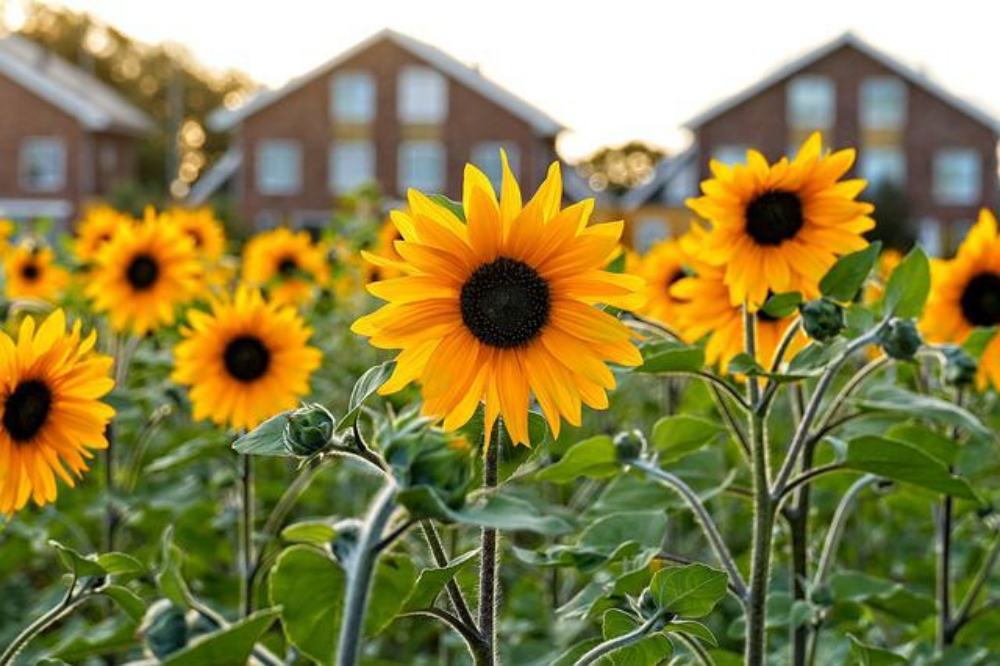
The sunflower was used at Fukushima in absorbing uranium from soils around the former nuclear power plant.
BIOREMEDIATION has been defined as a process used for the treatment of contaminated material, to include water, soil and subsurface material by altering the environmental conditions to stimulate the growth of microorganisms that will degrade the targeted pollutants. It was in the early 1950s, during the Korean War when an American research chemist, Howard Warne, was given the task of discovering the reasons for the degradation of US military uniforms in a humid climate. He discovered a microorganism that broke down fabric hitherto thought to be non-biodegradable.
Two years ago, chemists at the University of Portsmouth, UK, announced that they had discovered an enzyme from rubbish-dwelling bacteria that lived on a diet of plastic bottles to create a mixture capable of breaking down Polyethylene Terephthalate (PET) bottles at peed.
In the same year, German biochemist researchers discovered a strain of bacteria that digests polythene and plastic, which was previously thought to be resistant to biodegradation.
Most plastics are produced from natural organic materials such as hydrocarbons or cellulose; thus, making it most likely that something will find a way to exploit them as an energy source. The very use of natural organisms in providing an eco-friendly approach to the clearance of pollutants ranges from oil and toxic metals to dynamite and chemical weapons.
Marine microbes in the attack on oil spillages
Certain marine microbes can digest oil and utilise it as an energy source. Deep within the sea, oil has been seeping from the seabed for millions of years. This has led to the growth and evolution of oil feeding bacteria around the vents.
I well remember the 1967 ‘Torrey Canyon’ oil tanker disaster in West Cornwall, UK. Thousands of tons of crude oil seeped from the wreck of this super tanker that broke its back on rocks near Land’s End. The oil was washed up on tourist beaches within 20 miles of the wreck and the local marine life, including fisheries, and seabirds’ lives were severely threated.
The oil sank into the sand to produce a black quagmire and attempts to remove it manually truly failed until this oil digesting bacteria was introduced.
Within 10 years, the marine life in this beautiful coastal area had recovered.
A similar bacteria was used to clean up oil-spills caused by the 1991 Gulf War off the coast of Kuwait. These were eco-friendly ways of treating contamination by petroleum hydrocarbons.
Treatment of contaminated soils
Certain types of algae are even better in removing phenols than microbes, and fish waste bones have been used in the decontamination of soils full of lead. Fish bone is rich in calcium and phosphates, so once ground up and mixed with contaminated soil, the phosphates are freed as the bone slowly decomposes and migrates through the soil to bind with toxic metals to create a stable crystalline material that cannot be absorbed by human beings.
This method has been successfully used to decontaminate military lead-rich firing ranges and in fields where lead has been identified.
The role of plants in bioremediation

Alpine pennycress can thrive in nickel and zinc-rich soils. — Photo from Wikimedia/Randy Hausken
This particular form of bioremediation is referred to as ‘phytoremediation’. Water hyacinth and duckweed are two excellent examples of plant absorbers of the toxic metals of cadmium and lead. This was first observed by Russian scientists in dealing with nuclear power station leaks in the late 1950s.
The wild Alpine pennycress herb thrives on nickel-rich soils thus helping would be metal prospectors to detect deposits of this ore in both the European Alps and the Rocky Mountains in the USA!
In 2004, a multinational research paper was published highlighting the existence of over 400 plant species found worldwide, in both tropical and temperate regions, all of which are metal accumulators. Indian or brown mustard (Brassica x juncea) absorbed lead, sunflowers absorbed uranium and bulrushes selenium.
In fact, the Japanese Government has planted a vast area of sunflowers on the former disaster and toxic-ridden site of the Fukushima nuclear power plant; thus, helping to remove radioactive isotopes from the soil.
It appears that the presence of metals in plant stems and leaves helps protect them from diseases and insect pests.

Indian mustard is a great absorber of lead. — Photo from Wikimedia/Aditya Gurav
Metal-accumulating plants offer potential green remuneration owing to a process known as ‘phytoextraction’. This refers to the ability of specific plants to draw metals from the soil and concentrate them in harvestable parts above ground, such as stalks and flowers, where they can be removed, dried and converted into metal-rich ash.
This is also referred to as ‘phyto-mining’, where the ashes of pennycress grown on soils with high zinc levels can yield up to 40 per cent zinc, almost as good as high-grade ore.
Fungi can also transform environments particularly in breaking down pollutants, to include plastics, explosives and radioactive materials. In one research study, it was found that white rot fungus degraded 95 per cent of TNT in the soil of a war zone.
Clearly the utilisation of microbes and plants are eco-friendly methods of dealing with a huge range of pollutants.
We merely need to spend more money in cultivating and using these natural methods in digesting our plastic bottles and ‘eating up’ toxic materials in our soils.
Perhaps we should begin by tackling the sites of devastation left by the recent war in Syria, and even more recently, the continuing battles in Ukraine, if the bread basket of Europe is to be restored to its former glory.
from Borneo Post Online https://bit.ly/3xgGAOa
via IFTTT

No comments:
Post a Comment